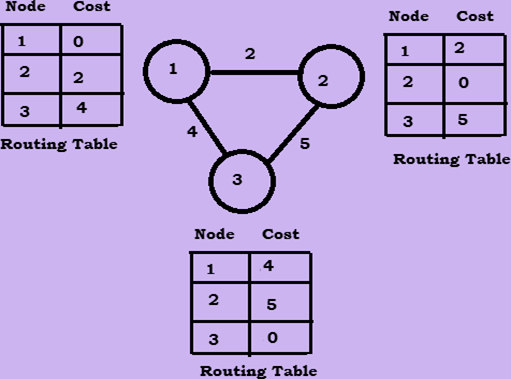- 1. Implement the data link layer framing methods such as character, character stuffing and bit stuffing
- 2. Write a program to compute CRC code for the polynomials CRC-12, CRC-16 and CRC CCIP
- 3. Develop a simple data link layer that performs the flow control using the sliding window protocol, and loss recovery using the Go-Back-N mechanism.
- 4. Implement Dijsktra’s algorithm to compute the shortest path through a network
- 5. Take an example subnet of hosts and obtain a broadcast tree for the subnet
- 7. Implement data encryption and data decryption
- 8. Write a program for congestion control using Leaky bucket algorithm
- 9. Write a program for frame sorting technique used in buffers
-
10. Wireshark
i. Packet Capture Using Wire shark
ii. Starting Wire shark
iii. Viewing Captured Traffic
iv. Analysis and Statistics & Filters - 11. How to run Nmap scan
- 12. Operating System Detection using Nmap
-
13. Do the following using NS2 Simulator
i. NS2 Simulator-Introduction
ii. Simulate to Find the Number of Packets Dropped
iii. Simulate to Find the Number of Packets Dropped by TCP/UDP
iv. Simulate to Find the Number of Packets Dropped due to Congestion
v. Simulate to Compare Data Rate& Throughput.
vi. Simulate to Plot Congestion for Different Source/Destination
vii. Simulate to Determine the Performance with respect to Transmission of Packets
AIM: Implement distance vector routing algorithm for obtaining routing tables at each node

Theory:
Distance Vector Routing Algorithms calculate a best route to reach a destination based solely on distance. E.g. RIP. RIP calculates the reach ability based on hop count. It’s different from link state algorithms which consider some other factors like bandwidth and other metrics to reach a destination. Distance vector routing algorithms are not preferable for complex networks and take longer to converge.
ALGORITHM/FLOWCHART:
Begin
Step1: Create struct node unsigned dist[20],unsigned from[20],rt[10]
Step2: initialize int dmat[20][20], n,i,j,k,count=0,
Step3: write “the number of nodes ”
Step4: read the number of nodes “n”
Step5: write” the cost matrix :”
Step6: intialize i=0
Step7: repeat until i<n
Step8: increment i
Step9: initialize j=0
Step10: repeat Step(10-16)until j<n
Step11: increment j
Step12:read dmat[i][j]
Step13:intialize dmat[i][j]=0
Step14:intialize rt[i].dist[j]=dmat[i][j]
Step15:intialize rt[i].from[j]=j
Step16:end
Step17:start do loop Step (17-33)until
Step18:intilialize count =0
Step19:initialize i=0
Step20:repeat until i<n
Step21:increment i
Step22:initialize j=0
Step23:repeat until j<n
Step24:increment j
Step25:initialize k=0
Step26:repeat until k<n
Step27:increment k
Step28:if repeat Step(28-32) until rt[i].dist[j]>dmat[i][k]+rt[k].dist[j]
Step29:intialize rt[i].dist[j]=rt[i].dist[k]+rt[k].dist[j]
Step30:intialize rt[i].from[j]=k;
Step31:increment count
Step32:end if
Step33:end do stmt
Step34:while (count!=0)
Step35:initialize i=0
Step36:repeat Steps(36-44)until i<n
Step37:increment i
Step38:write ‘ state values for router’,i+1
Step39:initialize j=0
Step40:repeat Steps ( 40-43)until j<n
Step41:increment j
Step42:write ‘node %d via %d distance % ‘,j+1,rt[i].from[j]+1,rt[i].dist[j]
Step43:end
Step44:end
End
Program:
#include<stdio.h>
struct node
{
unsigned dist[20];
unsigned from[20];
}
rt[10];
int main()
{
int dmat[20][20];
int n,i,j,k,count=0;
printf(“\nEnter the number of nodes : “);
scanf(“%d”,&n);
printf(“Enter the cost matrix :\n”);
for(i=0;i<n;i++)
for(j=0;j<n;j++)
{
scanf(“%d”,&dmat[i][j]);
dmat[i][i]=0;
rt[i].dist[j]=dmat[i][j];
rt[i].from[j]=j;
}
do
{
count=0;
for(i=0;i<n;i++)
for(j=0;j<n;j++)
for(k=0;k<n;k++)
if(rt[i].dist[j]>dmat[i][k]+rt[k].dist[j])
{
rt[i].dist[j]=rt[i].dist[k]+rt[k].dist[j];
rt[i].from[j]=k;
count++;
}
}
while(count!=0);
for(i=0;i<n;i++)
{
printf(“\nState value for router %d is \n”,i+1);
for(j=0;j<n;j++)
{
printf(“\nnode %d via %d Distance%d”,j+1,rt[i].from[j]+1,rt[i].dist[j]);
}
}
printf(“\n”);
}
Output:
Enter the number of nodes : 3
Enter the cost matrix :
0 2 4
2 0 4
4 5 0
State value for router 1 is
node 1 via 1 Distance0
node 2 via 2 Distance 2
node 3 via 3 Distance 4
State value for router 2 is
node 1 via 1 Distance 2
node 2 via 2 Distance0
node 3 via 3 Distance 4
State value for router 3 is
node 1 via 1 Distance4
node 2 via 2 Distance 5
node 3 via 3 Distance 0
